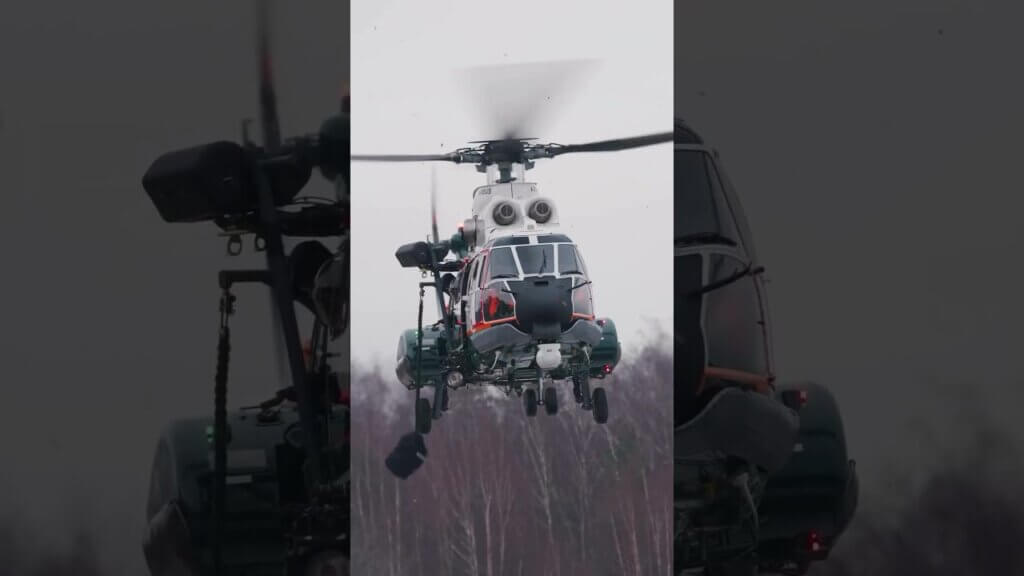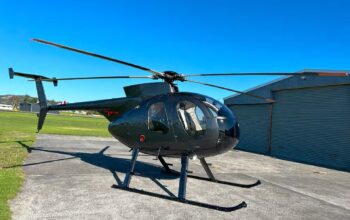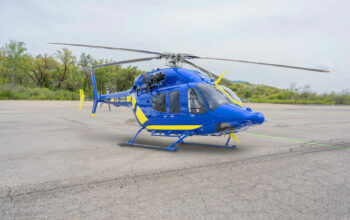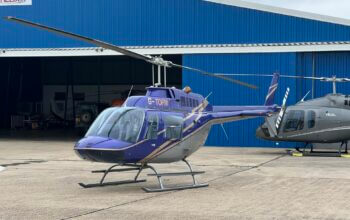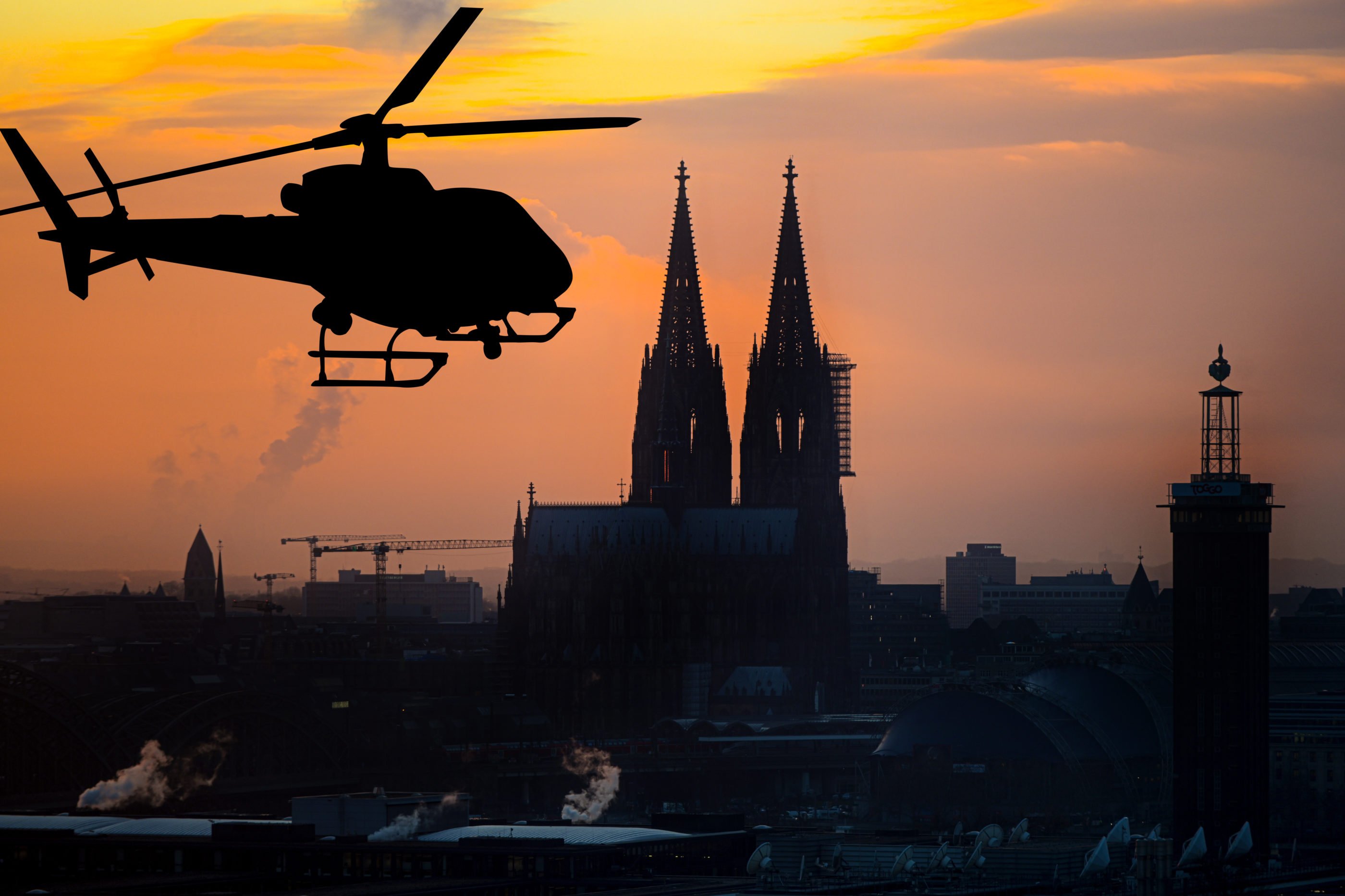
On Nov. 16, Europe’s newest rotorcraft-focused tradeshow and conference will finally open its doors — 12 months later than originally planned.
The debut edition of European Rotors, which aims to become the continent’s premiere event for all things vertical-lift, had been set for November 2020. However, like tradeshows for every industry around the world, it was impacted by increasing restrictions from the Covid-19 pandemic, as the second wave began to be felt in Europe.
Now, with vaccination rates increasing and a relatively low Covid case rate in most of Europe, the show is ready to welcome visitors from Nov. 16 to 18 in the Koelnmesse exhibition center in Cologne, Germany.
A sold-out show floor will see close to 150 exhibitors with between 15 and 20 aircraft on static display, while over 130 speakers and presenters will create a packed and broad-ranging conference program.
Major OEM exhibitors include Airbus, Bell, Leonardo, Safran, Pratt & Whitney Canada, along with a host of other manufacturers and companies offering product support or services.
European Rotors: The VTOL Show and Safety Conference, to give it its full title, is being organized by the European Helicopter Association (EHA), in cooperation with the European Union Aviation Safety Agency (EASA). It marks the first time the two entities have teamed up to provide such an event for the European rotorcraft community.
The conference program consists of three parts: the long-running EASA Rotorcraft and VTOL Symposium, which focuses on the latest rotorcraft developments from a safety perspective; educational content, in the form of certified training sessions, best practice seminars and workshops; and presentations from operators and industry leaders on three stages on the show floor.
Overarching topics include innovation, safety, the future of vertical flight, and business recovery after Covid-19. Other subjects include sound level reduction, training, the complementary use of drones, and the joint use of airspace.
The organizers aim for the show to have as broad a reach as possible to reflect the versatility of VTOL missions, and with that in mind, the program includes separate HEMS, offshore, aerial work, and police/parapublic conferences.
“We want to have everything underneath one roof, over three days, covering all the aspects that ‘the bee of aviation’ — the helicopter — is able to fulfill,” Frank Liemandt, European Rotors’ show director, told Vertical. “Besides this, we have tried to link other conferences to our event, like the European Drone Forum or a flight instructor course organised by the German Helicopter Association, both happening directly one day before our event around Cologne.”
Other highlights include a day of sessions on innovation and advanced vertical flight, organized by the Vertical Flight Society; a safety seminar from Claude Vuichard, developer of the famed Vuichard Recovery Technique to escape from Vortex Ring State; and a presentation from HEMS operator ADAC on lessons learned during its work following the devastating floods that hit Western Germany in July 2021.
An ongoing digital series, already accessible on the European Rotors’ website with close to 20 videos published and live web-events organised, has covered topics ranging from eVTOL propulsion systems and a general market overview, to company and product introductions. As the show launches, pre-recorded presentations will also be added to the website.
“For an event of our size to already have a second platform on the internet is quite exceptional,” said Liemandt. “We are quite happy that we don’t just offer the real show platform, but also the chance to connect virtually for everyone who might be not able to travel to Cologne this year.”
Finally, a “Rotorthon” challenge will see six teams of aerospace students competing over the show’s three days to develop solutions to two challenges faced by the global rotorcraft community. Winners will be picked by a jury representing the whole VTOL community on the third afternoon.
A resilient industry
The influence of the Covid pandemic will be keenly felt at the conference, from the extra steps required to attend, to the seminars and workshops discussing business and operational life throughout it.
Peter Moeller, EHA chairman, told Vertical that the pandemic showed the value of the rotorcraft sector within Europe, with most operators considered to be providing essential services to society.
The impact by operating sector varied a little, he said, with areas such as utility and helicopter emergency medical services (HEMS) being very stable, while aerial tourism took a clear hit.
“Some sectors, like training, were a little bit down in operations at the beginning of the pandemic, but by applying protective measures they were able to pick up quite soon again,” he said. “What I hear from ATOs [approved training organizations] is they actually increased their number of students during the pandemic; because people were not allowed to travel anymore to spend their money somewhere else, they thought, ‘What about becoming a private helicopter pilot?’ So, these numbers have picked up.”
Liemandt said one of the lessons learned from the pandemic was the need for Europe-wide solutions to such events, including natural disasters.
“We need unified European regulations to have forces, to have helicopters, ready to support each country on short notice — this is one of the issues we have to check out,” he said.
Another noticeable impact of the pandemic was an increase in corporate shuttle flights he said, as recognition of the benefits of on-demand aviation, and its availability, become more widespread.
“People want to travel now with individual solutions, with the door-to-door concept that helicopters support,” he said.
The show will explore a related theme — the future of vertical lift and urban air mobility.
“We expect that the whole vertical lift industry will change somehow in the future, and that’s what we try to address also during the show,” said Moeller. “We still have traditional rotorcraft, but we also talk about the vertical lift capabilities of the future, which may be unmanned or manned, but we are trying to integrate them into the show to really look into the future. What will the VTOL industry look like? How can we incorporate these new technologies into our daily business?”
Traditional vertical-lift operators are the best-placed to put such technologies to work, he said.
“There are certain missions that will be done in the future with unmanned aerial vehicles,” he said. “But they still need to be operated, and who has the expertise of operation of air vehicles? Helicopter operators. So, they will include these new tools in their company as a complementary part of their entire operation.”
Visiting the show
European Rotors will be implementing a variety of Covid-era safety measures. The most fundamental of these is a requirement for proof of either full vaccination, a negative result, or recovery for entry to the exhibition center.
In addition, masks must be worn when not seated; visitors and exhibitors are expected to keep a distance of 1.5 meters from each other; and ventilation has been optimized throughout the facility. As well as increased sanitation and cleaning intervals, the hallways of the show floor have been expanded to allow for more space for foot traffic.
“A lot of the conference topics are not happening in closed rooms, but on our three conference stages, which we have in the [exhibition] hall,” said Tobias Bretzel, European Rotors’ project manager at Messe Friedrichshafen. “There is a certain distance between each chair, and given that it’s in the exhibition hall, there is a high ceiling with good ventilation of fresh air.”
Moeller said that OEMs and operators throughout Europe have been “massively supportive” of the show, from its inception several years ago, through the difficult decision to cancel last year’s event, to this year’s packed debut.
“It’s a show which is really wanted by the industry, and we created it for the industry,” said Moeller.
While the show will have a European focus, exhibitors from around the world have confirmed their attendance, despite the extra steps required for international travel during the Covid era.
That said, the show’s organizers have admitted the need to be realistic in terms of their expectations for this year’s first edition.
“If we manage to reach our strategic aim to bring the regulator, the operators, and the industry together in one place, after these two years of pandemic, to talk about challenges and future needs then we have been successful,” said Moeller.





